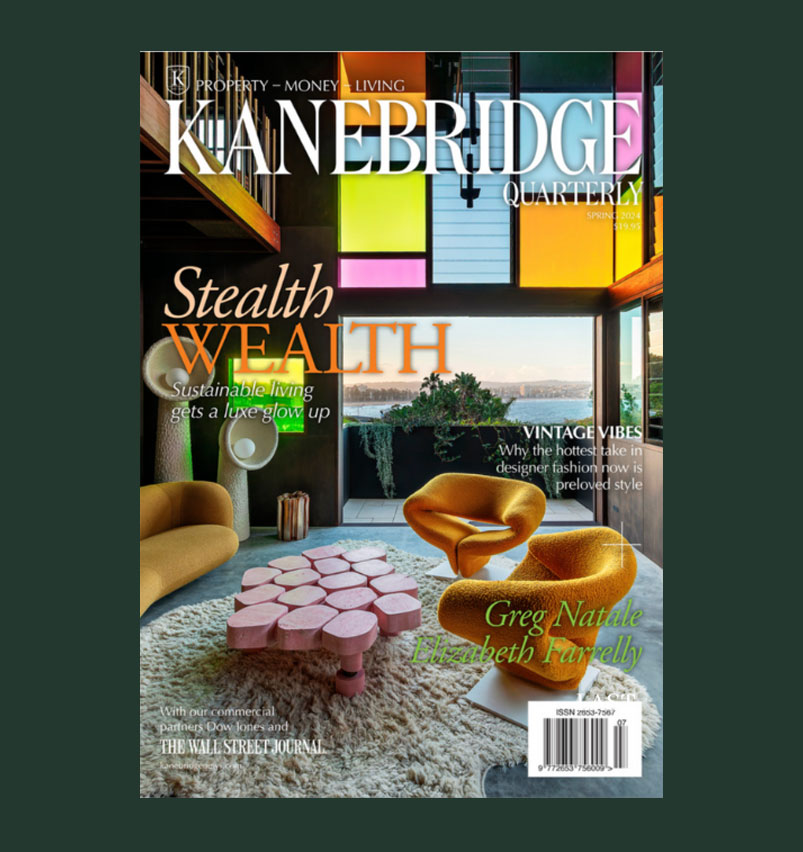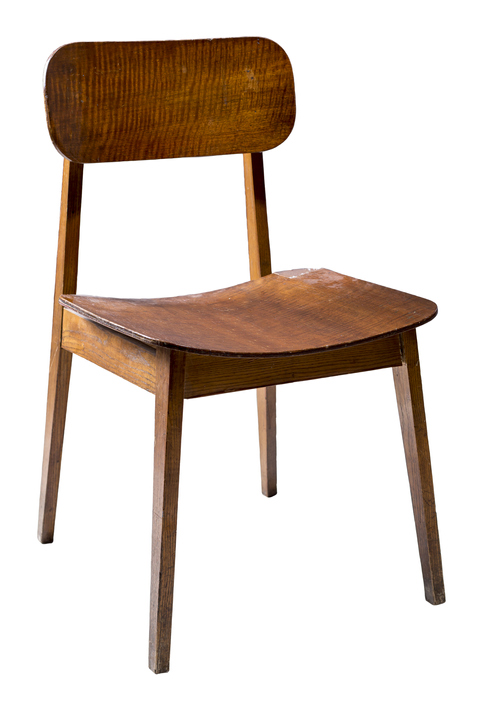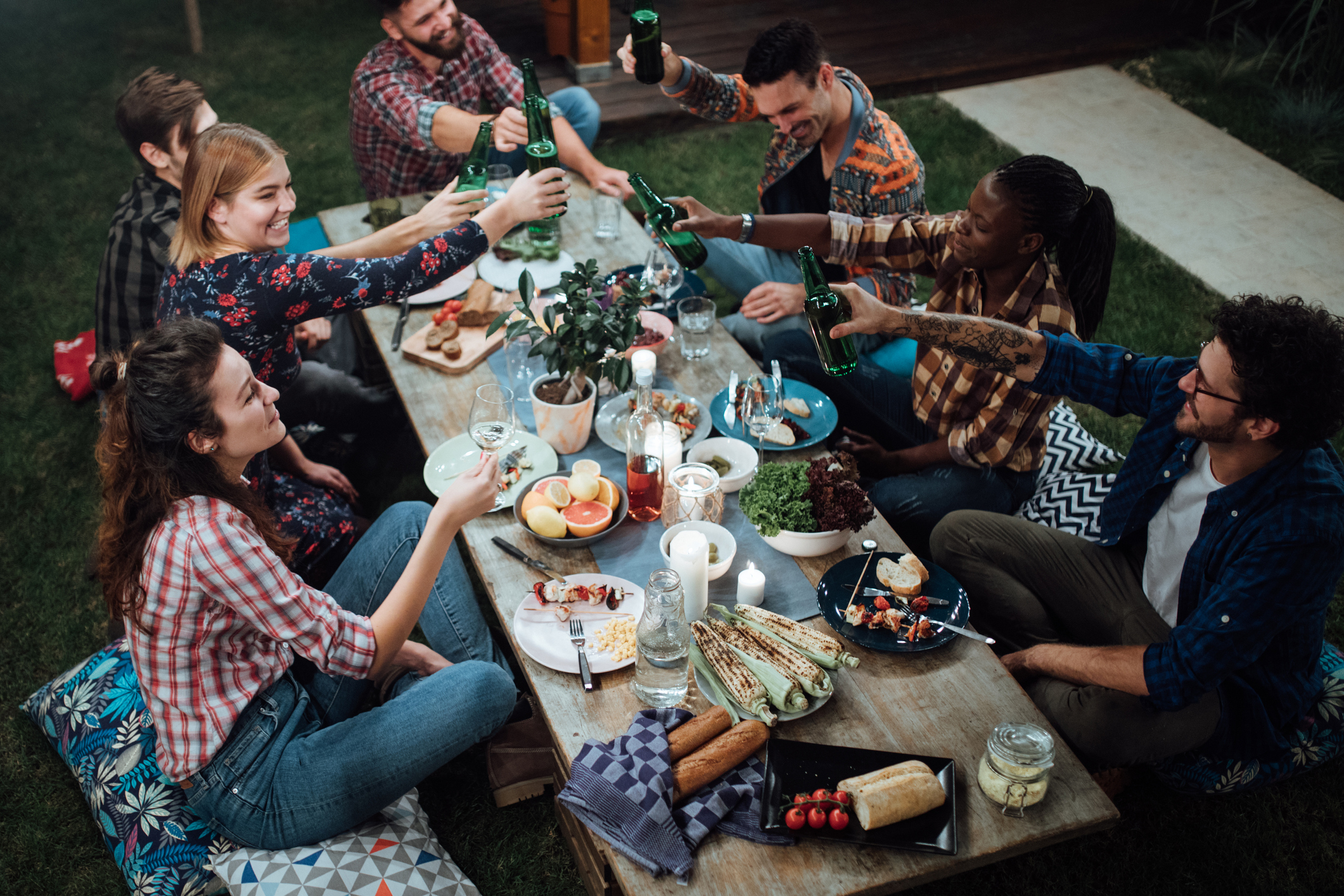Is This the ‘It’ Chair of 2023? Interior Designers Think So
Folksy wooden seats that hail from midcentury Europe and Scandinavia—which some design pros are calling brutalist in style—are showing up everywhere
AN UNFUSSY and downright brutish, midcentury vintage chair design has been muscling its way into even the most traditional of homes lately. Though no cozy La-Z-Boy, the seat is getting high marks for a wabi-sabi style that celebrates imperfections, thanks to exposed bolts, obvious joints, plain-Jane planks and unpolished wood. Some look like little more than two pieces of wood attached to legs, but keyhole details or sculpted backs can make them sweeter. Designers and dealers are calling the increasingly in-demand seats, which hail primarily from Scandinavia and Europe, brutalist. At online marketplace 1stDibs, searches for “brutalist chair” are up 115% year over year.
“These mid- to late-century chairs are raw, organic and almost harsh,” said Maureen Ursino, an interior designer in Colts Neck, N.J., who’s been buying them for clients because they add “a contemporary element in not too intense of a way.” Recently she placed a single Danish pinewood chair, likely a survivor of the 1970s, in the bathroom of a Larchmont, N.Y., home. “I used it as a decorative accent, as though it were a piece of art,” she said.
Heidi Caillier planted an oak example from Germany in a child’s bedroom in San Francisco. The Seattle-based designer welcomes “the sense of patina” the seats bring to a project: “Like maybe this chair has been in this family for years and keeps being passed down but also is not too precious.”
Though this simple wood chair is unquestionably trending, skeptics take issue with its equally buzzy “brutalist” label. Florence de Dampierre, author of “Chairs: A History” decries that description as sloppy. “Brutalism refers to an architectural style from the ’60s, of concrete,” she said. “The term for this kind of modern chair might more appropriately be handicraft.” Meanwhile, Los Angeles interior designer Martha Mulholland traces its influences to the rustic modern Scandinavian simplicity of Axel Einhar Hjorth and 18th-century Tyrolean furniture. (The Future Perfect, a retailer of collectible pieces, labels its examples above as such.) “The beauty of the design is in the simplicity of seeing the wood grain and joinery detail,” said Ms. Mulholland. She prefers to classify the seats as European Primitive Modern: “I would say the chair is more primitive than brutal, but it’s a matter of semantics.”
At Chairish, a reseller of vintage design where interest in the terms “brutalist” and “wabi-sabi” are building, Noel Fahden Briceño, vice president of merchandising, says European dealers first applied the term. Although the name is being used loosely, she said, “when dealers started titling these chairs ‘brutalist,’ I said, OK, I can see that.”
Whatever you want to call the seats, designers are embracing the little brutes because they are unexpected. “I like that they feel unrecognisable,” said Ms. Caillier. “So many chairs have become trendy and overused, but it’s hard to find the same one of these chairs more than once.”
The design is also proving quite versatile. “There is a boldness and sharp sculptural quality to them, and they can hold their own in any room because they are simple,” said Ms. Mulholland. “They can cover a lot of ground aesthetically.” She recently used a couple of primitive three-legged walnut chairs underneath the living room windows of a home in Los Angeles’s Lafayette Square. The historic Craftsman home boasts its original unpainted mahogany woodwork. “I was playing into that masculinity,” she said, “but I also liked the contrast of putting the chair up against a pink velvet drape.”
The chairs’ roughness tends to clash intriguingly with softer, more feminine elements like that. This visual dissonance has helped fuel their popularity. “You can use one chair as an accent piece, even if the rest of the room is refined,” said Ms. Fahden Briceño.
Ms. Ursino says these chairs are not known for their coziness and may need a little help—she upholstered the seats of brutalist chairs she set around a game table to boost their comfort. Other designers are stationing them around meal tables, however. Los Angeles interior designer Lauren Piscione placed eight barrel-backed examples in a dining room, their rugged homeyness contributing to the calm of the space.
In a Tudor revival by Seattle interior designer Lisa Staton, a family of five pulls up oak versions made in the Netherlands in the 1970s. A depression in the seat makes them quite comfortable, said Akash Niranjan, the father in the household. “We work from home three days a week and often find ourselves sitting at the dining room table for long stretches and have not had any issues,” he said. “Our three young kids like them as well.”
 Copyright 2020, Dow Jones & Company, Inc. All Rights Reserved Worldwide. LEARN MORE
Copyright 2020, Dow Jones & Company, Inc. All Rights Reserved Worldwide. LEARN MORE
This stylish family home combines a classic palette and finishes with a flexible floorplan
Just 55 minutes from Sydney, make this your creative getaway located in the majestic Hawkesbury region.
The remote northern island wants more visitors: ‘It’s the rumbling before the herd is coming,’ one hotel manager says
As European hot spots become overcrowded , travellers are digging deeper to find those less-populated but still brag-worthy locations. Greenland, moving up the list, is bracing for its new popularity.
Aria Varasteh has been to 69 countries, including almost all of Europe. He now wants to visit more remote places and avoid spots swarmed by tourists—starting with Greenland.
“I want a taste of something different,” said the 34-year-old founder of a consulting firm serving clients in the Washington, D.C., area.
He originally planned to go to Nuuk, the island’s capital, this fall via out-of-the-way connections, given there wasn’t a nonstop flight from the U.S. But this month United Airlines announced a nonstop, four-hour flight from Newark Liberty International Airport in New Jersey to Nuuk. The route, beginning next summer, is a first for a U.S. airline, according to Greenland tourism officials.
It marks a significant milestone in the territory’s push for more international visitors. Airlines ran flights with a combined 55,000 seats to Greenland from April to August of this year, says Jens Lauridsen, chief executive officer of Greenland Airports. That figure will nearly double next year in the same period, he says, to about 105,000 seats.
The possible coming surge of travellers also presents a challenge for a vast island of 56,000 people as nearby destinations from Iceland to Spain grapple with the consequences of over tourism.
Greenlandic officials say they have watched closely and made deliberate efforts to slowly scale up their plans for visitors. An investment north of $700 million will yield three new airports, the first of which will open next month in Nuuk.
“It’s the rumbling before the herd is coming,” says Mads Mitchell, general manager of Hotel Nordbo, a 67-room property in Nuuk. The owner of his property is considering adding 50 more rooms to meet demand in the coming years.
Mitchell has recently met with travel agents from Brooklyn, N.Y., South Korea and China. He says he welcomes new tourists, but fears tourism will grow too quickly.
“Like in Barcelona, you get tired of tourists, because it’s too much and it pushes out the locals, that is my concern,” he says. “So it’s finding this balance of like showing the love for Greenland and showing the amazing possibilities, but not getting too much too fast.”
Greenland’s buildup
Greenland is an autonomous territory of Denmark more than three times the size of Texas. Tourists travel by boat or small aircraft when venturing to different regions—virtually no roads connect towns or settlements.
Greenland decided to invest in airport infrastructure in 2018 as part of an effort to expand tourism and its role in the economy, which is largely dependent on fishing and subsidies from Denmark. In the coming years, airports in Ilulissat and Qaqortoq, areas known for their scenic fjords, will open.
One narrow-body flight, like what United plans, will generate $200,000 in spending, including hotels, tours and other purchases, Lauridsen says. He calls it a “very significant economic impact.”
In 2023, foreign tourism brought a total of over $270 million to Greenland’s economy, according to Visit Greenland, the tourism and marketing arm owned by the government. Expedition cruises visit the territory, as well as adventure tours.
United will fly twice weekly to Nuuk on its 737 MAX 8, which will seat 166 passengers, starting in June .
“We look for new destinations, we look for hot destinations and destinations, most importantly, we can make money in,” Andrew Nocella , United’s chief commercial officer, said in the company’s earnings call earlier in October.
On the runway
Greenland has looked to nearby Iceland to learn from its experiences with tourism, says Air Greenland Group CEO Jacob Nitter Sørensen. Tiny Iceland still has about seven times the population of its western neighbour.
Nuuk’s new airport will become the new trans-Atlantic hub for Air Greenland, the national carrier. It flies to 14 airports and 46 heliports across the territory.
“Of course, there are discussions about avoiding mass tourism. But right now, I think there is a natural limit in terms of the receiving capacity,” Nitter says.
Air Greenland doesn’t fly nonstop from the U.S. because there isn’t currently enough space to accommodate all travellers in hotels, Nitter says. Air Greenland is building a new hotel in Ilulissat to increase capacity when the airport opens.
Nuuk has just over 550 hotel rooms, according to government documents. A tourism analysis published by Visit Greenland predicts there could be a shortage in rooms beginning in 2027. Most U.S. visitors will stay four to 10 nights, according to traveler sentiment data from Visit Greenland.
As travel picks up, visitors should expect more changes. Officials expect to pass new legislation that would further regulate tourism in time for the 2025 season. Rules on zoning would give local communities the power to limit tourism when needed, says Naaja H. Nathanielsen, minister for business, trade, raw materials, justice and gender equality.
Areas in a so-called red zone would ban tour operators. In northern Greenland, traditional hunting takes place at certain times of year and requires silence, which doesn’t work with cruise ships coming in, Nathanielsen says.
Part of the proposal would require tour operators to be locally based to ensure they pay taxes in Greenland and so that tourists receive local knowledge of the culture. Nathanielsen also plans to introduce a proposal to govern cruise tourism to ensure more travelers stay and eat locally, rather than just walk around for a few hours and grab a cup of coffee, she says.
Public sentiment has remained in favour of tourism as visitor arrivals have increased, Nathanielsen says.
—Roshan Fernandez contributed to this article.
This stylish family home combines a classic palette and finishes with a flexible floorplan
Just 55 minutes from Sydney, make this your creative getaway located in the majestic Hawkesbury region.






















